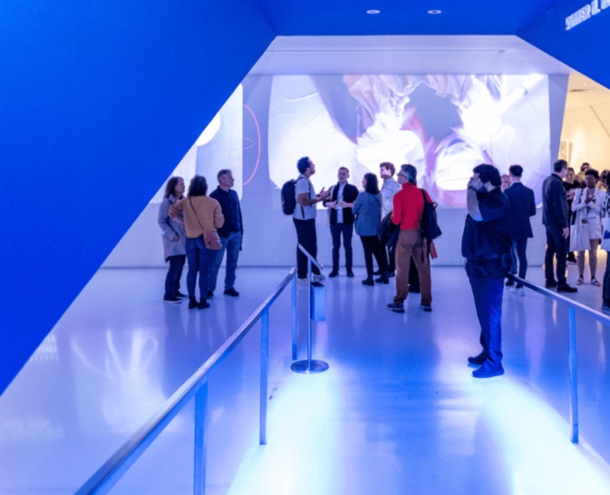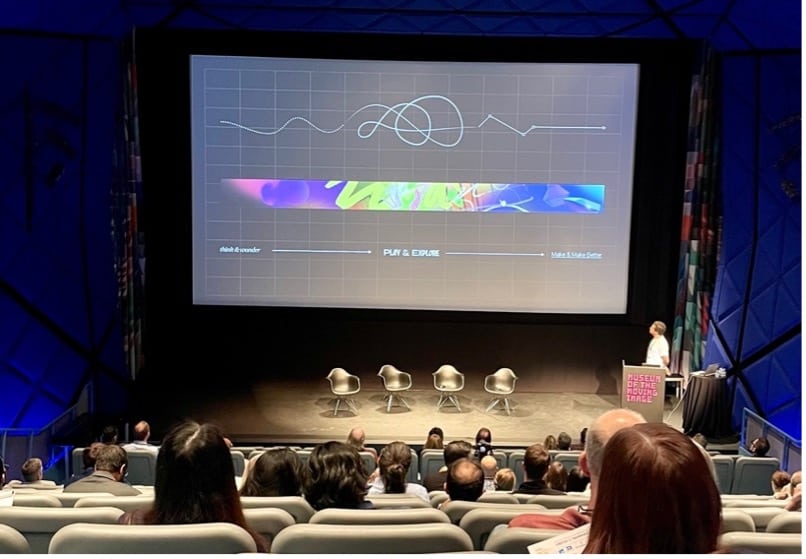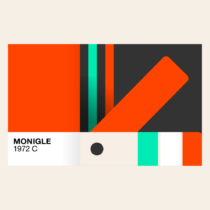Embrace the messiness: Reflections on the 2022 SEGD Branded Environments conference

Alison More, our Senior Director of Experiential Design, attended the SEGD branded environments conference in NYC. For over 15 years, Alison has been focusing on the role environments play in enabling experience and has done so for brands such as Tiffany & Co, Nike, LCMC Health, Quest Diagnostics, and Citibank. Her expertise is rooted in blending physical, digital, and human touchpoints—creating holistic experiences that not only deliver on design, but activate what people think, feel, and do. Below is her first-hand account experience including select takeaways, insights, and trends she saw or heard about at the conference.
A few weeks back, I attended the SEGD branded environments conference at the Museum of the Moving Image in New York. It was the first conference I have been to since the onset of the pandemic, and I had forgotten how much energy I gain from collective sharing experiences. I was (and still am!) inspired by the underlying message behind the overarching ‘Art of Storytelling’ theme: that embracing messiness during the creative process is okay. In fact, it’s necessary. That creativity happens when you have permission to be free and break boundaries.

I was excited. And aligned. And curious. Even a little uncomfortable. It made me think a lot about my own creative process, one that I bring to each team I work with at Monigle. As the lead creative of environments and experience, I have the unique opportunity to work across all of our teams on a wide range of projects that span space, strategy, and design. Regardless of the project, I dive into the problem, enabling myself to define rules and encourage teams to play safely within them. As meticulously and purposefully as I set these boundaries, I am eager to break them down, accept challenge from my peers, stretch them to their limits, make them human. It is after this building and breaking that we collectively come to tangible and meaningful solutions. Which, I realize, is our own version of messiness.
Throughout the day as I listened to the different workflows these individuals and collectives take in reaching creative nirvana, I realized that they had each found their own version of freedom, play and discovery. Their own journey in achieving messiness, therefore something new and exciting. Whether it was strategic and intentional or whimsical and free, their unique processes created their own unique solutions.
Learn more: Integrating brand across your physical spaces

“Embrace the messiness and trust the process” –Simon Buijs, BUCK
At BUCK their process, akin to our own, defines rules to guide the creative. Simon Buijs showcased an experience they designed for “The Art Project” festival in which they created territories for creative exploration based on the design process itself. The result was a series of tools and assets that can endlessly be molded, bent, flexed, and arranged into personalized solutions. It was an experiment in pushing creative boundaries, and toeing the line between structure and chaos, as much as it was an end product for the creative festival.
At Acrylicize, Carly Klaire described how they treat their workplace as a living art studio. With a ‘get your hands dirty first’ mentality they invite a wide range of individuals from different backgrounds into the process to explore through building, drawing, painting, sketching—in essence—making. It was especially joyful to experience the music video they recorded together during the onset of the pandemic in which they showcased that their version of creativity, and creation, is as much a bonding exercise as it is a design process.
Learn more: How to use brand as a filter to localize your spaces
“Art brings joy. Everyone can be part of the story” –Acrylicize
I was impressed by the exhibition and experience design students of FIT in New York and how they uniquely defined the problem before creating solutions. Lyka Williams and Jenny Hsin-Yi Chang uniquely translated brand values to concepts and created solutions inspired by the surrounding context. They each spoke easily and purposefully about their projects. Yet, as thoughtful as their stories were, I started to wonder about the messiness behind each of their processes that they were hesitant to divulge. This vulnerability that others were so willingly admitting to.
Nu Goteh, founder of Room with Magic, wrapped up the day as the physical embodiment of “the art of storytelling” via his ability to captivate an audience with his own personal story. He hilariously illustrated his own messy journey of dabbling in marketing, research, innovation, and strategy to ultimately navigate to where he is today. A place where his experience, and admission of failure, was a crucial step in understanding that his process required breaking down the barrier between strategy and design. That design is at the center of generating transformative and shared experiences.
At the end of the day, I was giddy, and it had nothing to do with the three cups of coffee I had flowing through my veins. It was energizing to confirm that there isn’t some code each of these companies, and individuals, had cracked. They aren’t all using the same exact tools, or the same series of methods. They aren’t all in person at the office, or all remote. They have each found clarity in their own unique creative process and embraced the imperfectness within it. It left me excited to embrace the journey of our own version of messiness.
To learn more about our experiential strategy and design practice here at Monigle, or to engage in a conversation with Alison, reach out to us here. We’d love to hear from you.




